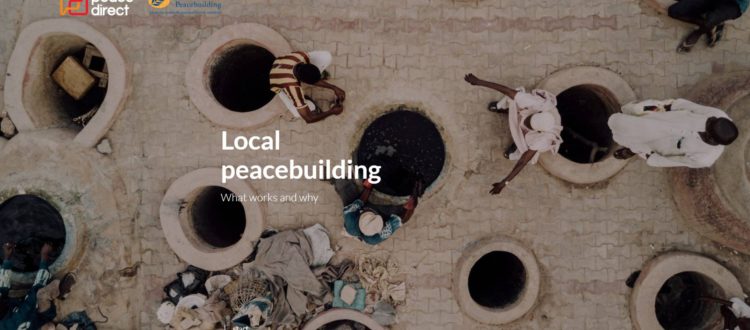Local peacebuilding – what works and why
This report, a collaboration between Peace Direct and the Alliance for Peacebuilding, explores the effectiveness of local peacebuilding, sharing real and impactful initiatives from around the world.
| Suggested Reading | Conflict Background | GCCT |
Click here to read the full report
‘What works and why’ argues that more support for local peacebuilding is needed, and highlights examples of effective local initiatives in support of this claim. To counter the scepticism some decision-makers express about the impact of local peacebuilding, the report is confined to examples that have been objectively assessed by external evaluators or researchers.
Despite an increased commitment to peacebuilding on the part of donors and other international organizations, the world has become more violent in the past decade.[1] Furthermore, while meeting Sustainable Development Goal (SDG) 16 is recognized as crucial to achieving all SDGs,[2] progress has been disappointing, and is currently under review.[3]
As the UN Security Council has made clear, while peacebuilding can and must be supported by international efforts, peace is only durable when it is locally built, owned and sustained.[4]
Local peacebuilding – actions initiated, led and implemented by people in and from their own context, both at the grassroots and nationally – is therefore essential. Yet local peacebuilders are too often starved of support. Their political leaders can be unsupportive, meaning international help is crucial. International donors and organizations, however, are often unwilling or unable to step in.
This can be due to risk aversion, prejudice and operational constraints, as does an unwarranted scepticism that local actions have the requisite depth, scope and scale of impact to reduce violence and shift societies from fragility to resilience. Even so, local peacebuilders have demonstrated a significant impact on peace. This report therefore argues that the international community must give them more support.
Based on an examination of over 70 external evaluations of local initiatives, the report highlights and analyses their considerable success in three domains of impact:[5]
- Preventing, reducing or stopping violence;
- Improving relationships between and among people and peoples (i.e. ‘horizontal relationships’);
- Improving relationships between people and those who govern them (‘vertical relationships’).
The report further divides these impacts into three ever-deepening levels of change: Knowledge and attitudes, behavior, and structures (i.e. norms, systems, institutions).
Three clusters of peacebuilding approaches emerged from the evaluations studied:
- Community-based peace initiatives;
- Initiatives led by or engaging with specific groups, such as women, youth and traumatized people;
- Initiatives that advocate improved national policies and discourse, and early-warning networks.
The sustainable impacts on peace of these approaches are explored and analysed, forming the basis for practical recommendations aimed at donors, multilateral organizations and international NGOs.
The views expressed in this article do not necessarily reflect the views of TransConflict.



















